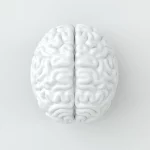Types of Bipolar Disorder – Bipolar disorder is a mental illness that causes drastic changes in mood, energy, and activity levels. People with bipolar disorder often swing from feeling very happy or energetic (known as manic episodes) to feeling very sad and low (known as depressive episodes). These changes can be so extreme that they interfere with a person’s ability to work, sleep, eat, and enjoy activities.
Bipolar disorder does not happen due to one single factor, but it may run in families. Other possible factors include brain structure, neurotransmitter levels, and stress. Bipolar disorder usually starts in late adolescence or early adulthood. It is essential to seek professional help if a person thinks they may be bipolar, as they can manage the condition with medication and therapy.

Causes, Risk Factors, and Types of Bipolar Disorder
Bipolar disorder is not caused by a single factor but rather by a combination of genetic and environmental factors.
- Family history: Bipolar disorder often runs in families, suggesting a genetic component to the condition. However, there is no specific data that indicates which genes are involved.
- Brain structure: Some research has suggested that people with bipolar disorder may have differences in the design and function of their brains. For example, they may change how certain chemicals (neurotransmitters) work in their brain.
- Stressful life events: Stressful life events (such as the death of a loved one or losing a job) can trigger an episode of mania or depression in people with bipolar disorder.
- Substance abuse: People with bipolar disorder are more likely to abuse alcohol or drugs, which can trigger manic or depressive episodes.
Two main types of bipolar disorder are bipolar I and bipolar II.
- Bipolar I: Bipolar I disorder is characterized by at least one episode of mania, often followed by an episode of depression. In some cases, people with bipolar I may only experience manic episodes.
- Bipolar II: Bipolar II disorder is characterized by episodes of depression and hypomania (a less severe form of mania). People with bipolar II do not usually experience full-blown manic episodes.
There are several types of bipolar disorder, including cyclothymic and rapid cycling bipolar disorder.
- Cyclothymic Disorder: Cyclothymic disorder is a milder form of bipolar disorder. It is characterized by episodes of hypomania and depression lasting at least two years (one year in children and adolescents).
- Rapid Cycling Bipolar Disorder: Rapid cycling bipolar disorder is a form of the condition that is characterized by four or more episodes of mania or depression within 12 months.
- Mixed Features: Some people with bipolar disorder may simultaneously experience symptoms of both mania and depression (known as various features). For example, they may feel depressed and have trouble sleeping and irritability.
- Catatonia: Catatonia is a rare but severe condition in people with bipolar disorder. It is characterized by periods of immobility and stupor. People with catatonia may also have strange movements, such as repetitive or purposeless motions.
Bipolar Disorder Symptoms and Diagnosis
Bipolar disorder symptoms can vary depending on the type and severity.
- Mania: Mania is characterized by an elevated mood, excessive energy, and impulsive behavior. People in a state of mania may feel excessively happy or “high” and have a reduced need for sleep. They may also be more likely to take risks, such as engaging in risky sexual behavior or spending large amounts of money. Symptoms of mania can last for several days or weeks and may eventually lead to a manic episode.
- Depression: Depression is characterized by feelings of sadness, emptiness, or hopelessness. People with depression may also have low energy levels and trouble concentrating or sleeping. Some people with depression may experience suicidal thoughts or attempt suicide. Major depressive episodes can last for several weeks or months. Bipolar disorder can also cause other psychiatric symptoms, such as anxiety, paranoia, and psychosis.
- Anxiety: People with bipolar disorder may experience anxiety during manic or depressive episodes. Anxiety symptoms can include feeling restless or tense, having difficulty sleeping, and feeling irritable or on edge.
- Paranoia: During manic or depressive episodes, people with bipolar disorder may become paranoid, meaning they may have delusions (false beliefs) or hallucinations (seeing or hearing things that are not there).
- Psychosis: Psychosis is a rare but severe condition in people with bipolar disorder. A loss of touch with reality characterizes it. People with psychosis may hear voices, see things that are not there (hallucinations), or believe things that are not true (delusions). Psychosis can be accompanied by paranoia, disorganized thinking, and impaired judgment.
- Hypomania: Symptoms of hypomania are similar to those of mania but are not as severe. They include feeling energetic and optimistic, being more productive than usual, and talking more quickly than average.
Children and teens with bipolar disorder may experience the same symptoms as adults. However, they may also have some unusual symptoms. For example, children with bipolar disorder may be more likely to have temper tantrums, outbursts of anger, or problems in school. Teens with the condition may be more likely to engage in risky behavior, such as substance abuse or self-harm.
Bipolar disorder can also cause other mental and physical health problems. For example, people with the condition may have eating disorders or substance abuse problems. They may also have trouble concentrating or remembering things. In some cases, bipolar disorder can lead to suicidal thoughts or behaviors.

Bipolar disorder can be challenging to diagnose because its symptoms vary. The condition is also often mistaken for other mental health disorders, such as depression or anxiety.
A person must be honest with a doctor about their symptoms and drug or alcohol use. To diagnose bipolar disorder, a doctor will usually do a physical exam and order blood tests to rule out other conditions. They will also ask about a patient’s medical history and symptoms.
A doctor may also refer the individual to a mental health professional, like a psychiatrist or psychologist, for an evaluation. A mental health professional can help determine if they have bipolar disorder and what type of treatment may be best for them.
Bipolar Disorder Treatment and Complications
Bipolar disorder is a treatable condition. Several types of treatment are available, including medication, therapy, and lifestyle changes.
Medication: Medication is the most common treatment for bipolar disorder. The medication prescribed will depend on the individual’s symptoms and the severity of their condition. Commonly prescribed medications for bipolar disorder include mood stabilizers, antipsychotics, and antidepressants.
Therapy: Therapy can be an effective treatment for different types of bipolar disorder. It can help people manage their symptoms and learn how to cope with the illness. Doctors may recommend therapy for bipolar disorder, including cognitive-behavioral therapy (CBT), interpersonal therapy (IPT), and family-focused therapy.
Lifestyle changes: There are many lifestyle changes that people with bipolar disorder can make to help manage their condition. These include regular exercise, eating a balanced diet, getting enough sleep, and avoiding stress.
Bipolar disorder is a chronic condition that does not have a cure. However, it is possible to manage the symptoms and live a healthy and productive life with treatment.
Bipolar disorder can cause some complications, including:
- Mood swings: Bipolar disorder can cause dramatic mood swings. These swings can be very sudden and can last for weeks or months at a time.
- Depression: Bipolar disorder can cause periods of depression, leading to feelings of sadness, emptiness, or hopelessness. Some people with bipolar disorder may experience suicidal thoughts or attempt suicide.
- Anxiety: Bipolar disorder can cause anxiety. This anxiety may manifest as Generalized Anxiety Disorder (GAD), Panic Disorder, or Social Anxiety Disorder.
- Substance abuse: Bipolar disorder can increase the risk of substance abuse. People with the condition may use drugs or alcohol to self-medicate their symptoms. This drug use can lead to addiction and other problems.
- Eating disorders: Bipolar disorder can increase the risk of developing an eating disorder. People with the condition may turn to food to cope with their symptoms, leading to problems such as obesity or anorexia nervosa.
- Problems with work or school: Bipolar disorder can cause problems with work or school. People with the condition may have trouble concentrating or remembering things. They may also have difficulty completing tasks or meeting deadlines.
- Relationship problems: Bipolar disorder can cause relationship problems. The condition can make communicating effectively and managing emotions challenging, leading to conflict and tension in relationships.
Preventing Bipolar Disorder
There is no sure way to prevent bipolar disorder. However, there are some things that an individual can do to reduce their risk of developing the condition.
If a person has a family member with bipolar disorder, they may be at increased risk for the condition. If a person is concerned about their risk, they should talk to their doctor. They can help a person assess their risk and make decisions about treatment and prevention.
There are also some lifestyle changes that a person can make to reduce their risk of bipolar disorder. These include regular exercise, eating a balanced diet, getting enough sleep, and avoiding stress.
If a person thinks they or someone they know may have bipolar disorder, it is essential to seek professional help. Early diagnosis and treatment can help reduce the severity of the condition and improve the chances of a successful recovery.



